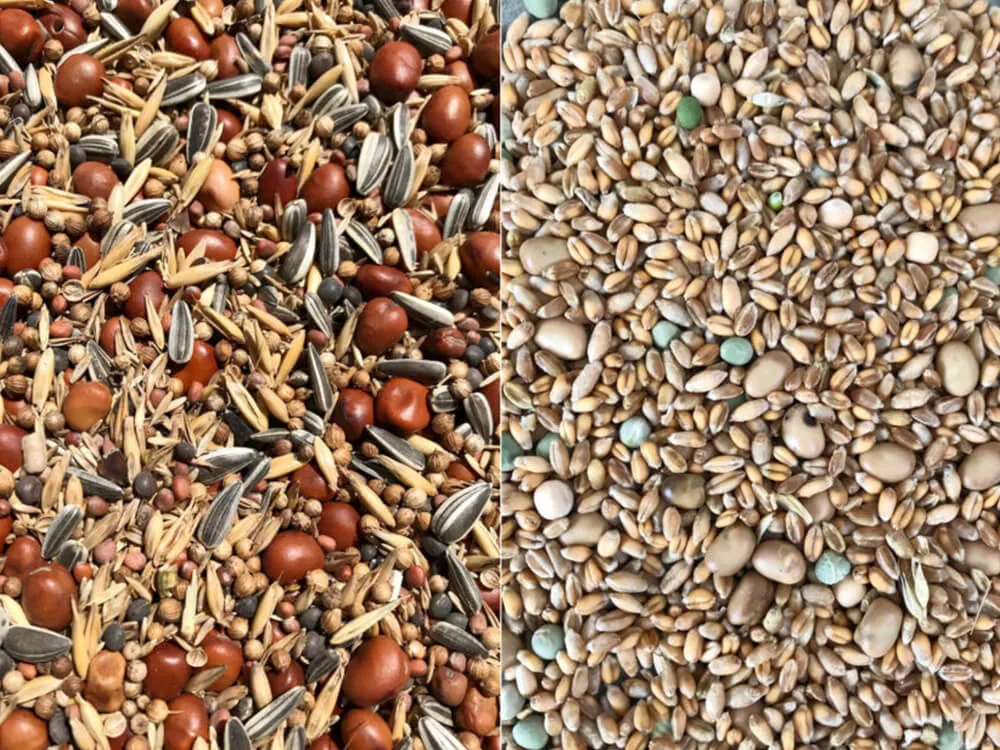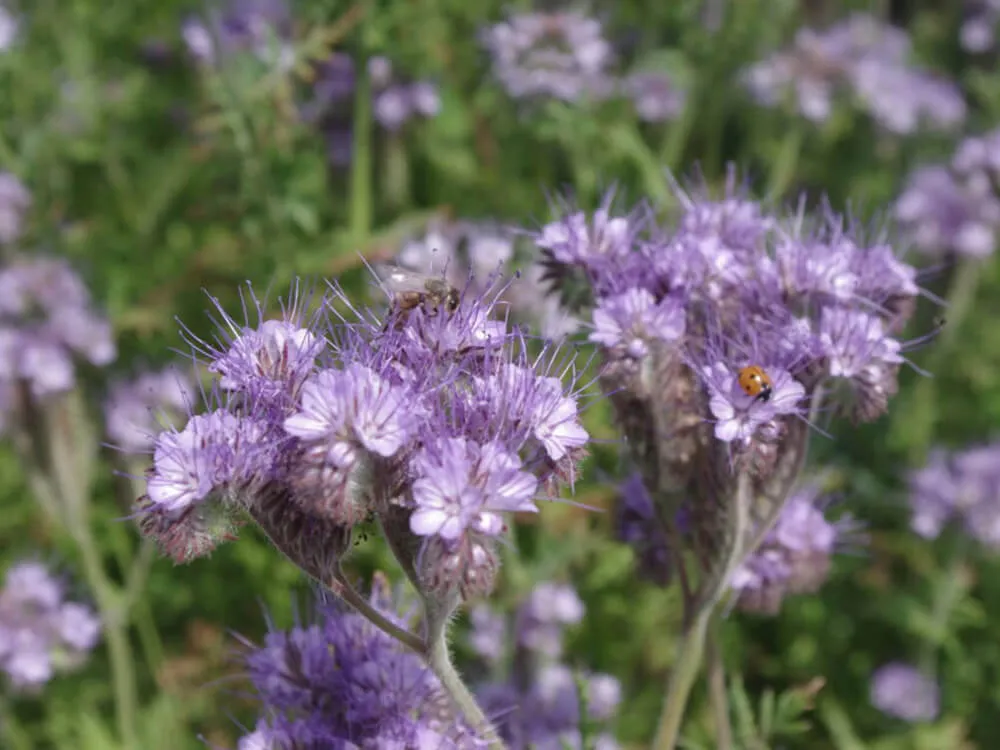





The first episode of the Radio Carbone podcast (French) is devoted to intercropping plant cover crops, a key lever for improving the carbon balance of an agricultural plot, but one that remains tricky to establish in dry conditions.
Frédéric, a farmer in Charente (Nouvelle-Aquitaine), is involved in the Soil Capital carbon program. He asked us to help him secure the success of his intercropping cover crops between a straw cereal harvested in summer and a spring crop (sunflower, corn, flax, etc.). Frédéric sows a cover crop of phacelia (5 kg/ha) in September, which he destroys in mid-November, and the biomass produced rarely exceeds half a tonne of dry matter.
Matthieu Archambeaud, agronomist specialized in agroecology and President of Icosystème, answers Frédéric's question by highlighting two major avenues for improving biomass production from cover crops in dry conditions.
Matthieu Archambeaud points out that multiplying species and introducing legumes into cover crops increases the chances of success. Indeed, phacelia is a particularly versatile species whose development is highly dependent on humidity conditions and the availability of fertility in the soil. Sowing it alone in dry conditions reduces its chances of success. Matthieu recommends that Frédéric switch to cover crops of at least 4-5 species, so as to be able to adapt to soil conditions at the time of sowing. Matthieu also suggests adding a cruciferous plant (e.g. forage radish), legumes (e.g. forage pea, faba bean, vetch), flax, oats... and insists on the choice of species for destruction. For vetches, for example, common spring vetches are easier to destroy.
When we sow a cover crop on September 15 and destroy it on November 15, biomass production is relatively low because the temperature sums in October and November are reduced (three times fewer degree days in October than in August). For Matthieu, the eight or nine months between harvesting in July and sowing sunflower and corn in April offer two main possibilities for maximizing development. The first solution is to bring forward the sowing date, through "semi-direct orientation", which involves sowing the cover crop as soon as possible after harvest, using a special seed drill. The cover crop will reach maturity (flowering) in October-November, and will then be destroyed at the end of its cycle and in good conditions. This approach, which enables early destruction to be maintained, is however quite specialized and can be found in relatively advanced systems, where a second "relay" cover crop is even planted in the autumn to bridge the gap with spring.

The second solution for maximizing canopy development is to maintain late sowing dates but postpone the destruction date. This is probably more feasible given the equipment available on Frédéric's farm (no no-till drill) and the sowing dates from September onwards. The cover crop will fulfil its soil protection and structuring function over winter, and will then be destroyed three months after the initial date, from February 15 for crops such as sunflower or maize. If the cover crop contains a high proportion of legumes, it can be destroyed quickly and easily, and is also capable of releasing fertility for the following crop. On the other hand, in the case of flax, which is sown much earlier, it is necessary for the cover crop to have almost completed its cycle by the start of winter, and it is better to anticipate the sowing date.

There are a number of ways to improve the success of plant cover crops in dry conditions. Some, such as diversifying the species sown or extending the duration of the cover, are relatively accessible and require no additional equipment, while others, such as direct seeding or establishing a relay cover, are more technical and require greater investment. Matthieu recommends giving priority to the former in the short term, while the latter, which are optimal in terms of services rendered, are more of a long-term objective.



The first episode of the Radio Carbone podcast (French) is devoted to intercropping plant cover crops, a key lever for improving the carbon balance of an agricultural plot, but one that remains tricky to establish in dry conditions.
Frédéric, a farmer in Charente (Nouvelle-Aquitaine), is involved in the Soil Capital carbon program. He asked us to help him secure the success of his intercropping cover crops between a straw cereal harvested in summer and a spring crop (sunflower, corn, flax, etc.). Frédéric sows a cover crop of phacelia (5 kg/ha) in September, which he destroys in mid-November, and the biomass produced rarely exceeds half a tonne of dry matter.
Matthieu Archambeaud, agronomist specialized in agroecology and President of Icosystème, answers Frédéric's question by highlighting two major avenues for improving biomass production from cover crops in dry conditions.
Matthieu Archambeaud points out that multiplying species and introducing legumes into cover crops increases the chances of success. Indeed, phacelia is a particularly versatile species whose development is highly dependent on humidity conditions and the availability of fertility in the soil. Sowing it alone in dry conditions reduces its chances of success. Matthieu recommends that Frédéric switch to cover crops of at least 4-5 species, so as to be able to adapt to soil conditions at the time of sowing. Matthieu also suggests adding a cruciferous plant (e.g. forage radish), legumes (e.g. forage pea, faba bean, vetch), flax, oats... and insists on the choice of species for destruction. For vetches, for example, common spring vetches are easier to destroy.
When we sow a cover crop on September 15 and destroy it on November 15, biomass production is relatively low because the temperature sums in October and November are reduced (three times fewer degree days in October than in August). For Matthieu, the eight or nine months between harvesting in July and sowing sunflower and corn in April offer two main possibilities for maximizing development. The first solution is to bring forward the sowing date, through "semi-direct orientation", which involves sowing the cover crop as soon as possible after harvest, using a special seed drill. The cover crop will reach maturity (flowering) in October-November, and will then be destroyed at the end of its cycle and in good conditions. This approach, which enables early destruction to be maintained, is however quite specialized and can be found in relatively advanced systems, where a second "relay" cover crop is even planted in the autumn to bridge the gap with spring.

The second solution for maximizing canopy development is to maintain late sowing dates but postpone the destruction date. This is probably more feasible given the equipment available on Frédéric's farm (no no-till drill) and the sowing dates from September onwards. The cover crop will fulfil its soil protection and structuring function over winter, and will then be destroyed three months after the initial date, from February 15 for crops such as sunflower or maize. If the cover crop contains a high proportion of legumes, it can be destroyed quickly and easily, and is also capable of releasing fertility for the following crop. On the other hand, in the case of flax, which is sown much earlier, it is necessary for the cover crop to have almost completed its cycle by the start of winter, and it is better to anticipate the sowing date.

There are a number of ways to improve the success of plant cover crops in dry conditions. Some, such as diversifying the species sown or extending the duration of the cover, are relatively accessible and require no additional equipment, while others, such as direct seeding or establishing a relay cover, are more technical and require greater investment. Matthieu recommends giving priority to the former in the short term, while the latter, which are optimal in terms of services rendered, are more of a long-term objective.

